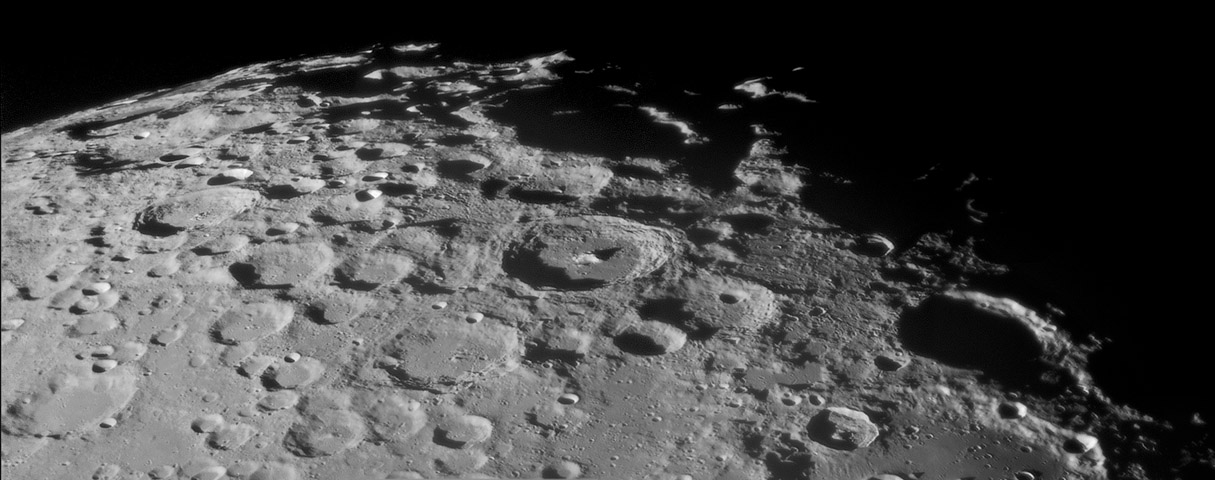image by Stefan Lammel, Uxbridge, England
The lunar south polar area is a source of innumerable wonderful images. The clustering and overlapping of craters, all tilted away by the Moon’s curvature, is dramatic and intruiging. Each time I look I try to appreciate something new. For example, consider the heights of crater rims. From work done in the 1970s we know that the height of a rim above the surrounding terrain is about 3-4% of the crater diameter. For 111 km wide Moretus (in the center of this image), the rim should be 350-450 m high, and perhaps it is. We can see in Stefan’s near-terminator view that Moertus has a wreath of ejecta - known as a glacis 150 years ago - that rises above nearby terrain. Now look at the crater on the far right. Blancanus is shrouded in shadow, providing an excellent view of its eastern rim’s height. With its diameter of 117 km, Blancanus’ rim should be about as high as that of Moretus, but it doesn’t seem to be. In fact, Blancanus hardly seems to have a rim at all. South (up) of Moretus at the terminator is a third crater, Newton (78 km), whose rim seems to be much higher than expected. A fourth case, and a telling one, is Rutherfurd on the the south rim of half-shown Clavius. Rutherfurd’s southern rim does not seem high, but its northern one does. Clearly in this case, local topography controls the height. Probably in each of these cases accidents of local topography effect rim height, and as craters age their rims become lower through erosion.
Technical Details
26-Feb-07 22:21UT. 10″ f4.8 Newtonian, DMK 21AF04, 4x PowerMate, green filter, 1/15s, gain 700, 700/2000 (crop: 1100/2000), MAP: 11-24x 64, Registax v4, PSE 5, Focus Magic.
Related Links:
Rükl chart 73
Full resolution image
Yesterday's LPOD: 5 Sights in One Crater
Tomorrow's LPOD: How High Are Rims?
COMMENTS?
Register, Log in, and join in the comments.




